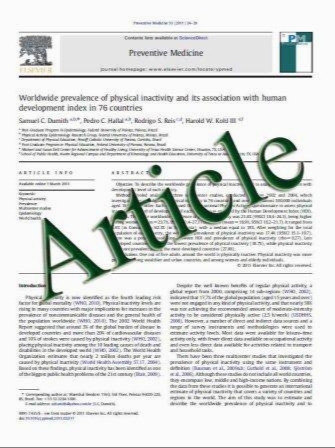Effects of paracetamol, non-steroidal anti-inflammatory drugs, acetylsalicylic acid, and opioids on bone mineral density and risk of fracture: results of the Danish Osteoporosis Prevention Study (DOPS)
- نوع فایل : کتاب
- زبان : انگلیسی
- مؤلف : P. Vestergaard & P. Hermann & J.-E. B. Jensen & P. Eiken & L. Mosekilde
- چاپ و سال / کشور: 2011
Description
Summary Pain medication has been associated with fractures. We found higher weight in paracetamol and non-steroidal antiinflammatory drugs (NSAID) users and lower vitamin D levels in opioid and acetylsalicylic acid users. None of the pain medications influenced bone mineral density or loss. NSAID were associated with an increased fracture risk. Introduction To study the effects of use of paracetamol, non-steroidal anti-inflammatory drugs (NSAID), acetylsalicylic acid (ASA), and opioids on bone mineral density (BMD) and risk of fractures. Methods Two-thousand sixteen perimenopausal women followed for 10 years as part of a partly randomised comprehensive cohort study on hormone therapy (HT). BMD was measured at baseline and after 10 years by DXA (Hologic). Results Paracetamol users were heavier (70.4±13.4 vs. 67.7±11.9 kg, 2p<0.01) than non-users. NSAID users were heavier (71.6±15.6 vs. 67.8±11.9 kg, 2p=0.04) than nonusers. ASA users had lower 25-hydroxy-vitamin D (25OHD) levels (21.9±9.3 vs. 25.3±12.4 ng/ml, 2p<0.01) than non-users. Opioid users had lower 25OHD (21.4± 8.4 vs. 25.2±12.3 ng/ml) and lower intake of vitamin D (2.2±1.1 vs. 3.1±3.0 ىg/day, 2p<0.01) than non-users. Despite these differences, no baseline differences were present in spine, hip, forearm or whole body BMD. Over 10 years, no differences were present in BMD alterations except a small trend towards a higher BMD gain in the spine in users of paracetamol, NSAID, ASA, and opioids compared to non-exposed. After adjustment, NSAID exposed sustained more fractures (HR=1.44, 95% CI 1.07–1.93) than non-users. For users of paracetamol and opioids, a non-significant trend towards more fractures was present after adjustment. For ASA users, no excess risk of fractures was present. Conclusion Significant differences exist between subjects exposed to pain medications and non-users. Despite an absence of an effect over time on BMD, users of NSAID experienced more fractures than expected. The reasons for this have to be explored in further studies.
Osteoporos Int DOI 10.1007/s00198-011-1692-0 Received: 19 April 2011 / Accepted: 6 June 2011


